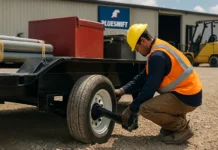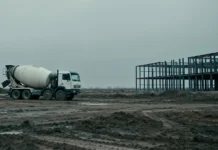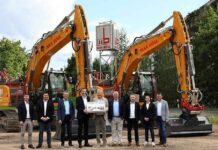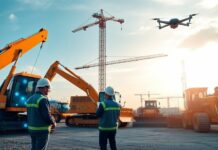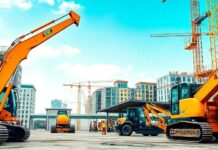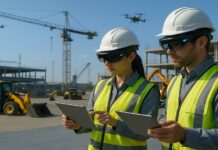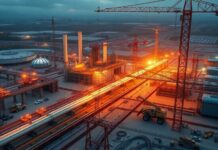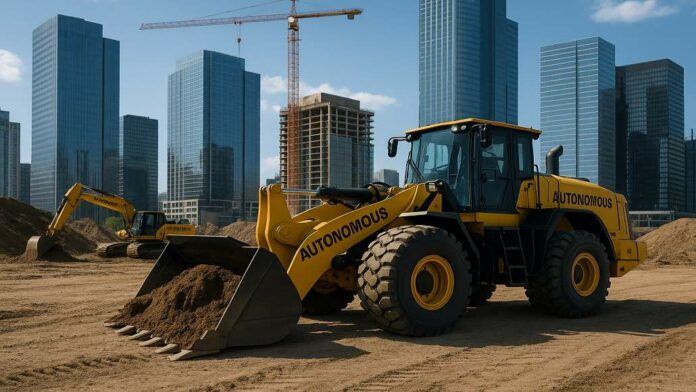The infrastructure sector is entering a bold new phase triggered by the autonomous construction equipment adoption, which is designed to enhance safety, decrease cost, and at the same time meet the objectives related to sustainability. Due to the global Market when it comes to autonomous construction equipment, which is anticipated to grow to $9.86 billion in 2030, from $4.43 billion in 2024, the transition towards automation is indeed reshaping how the infrastructure along with urban landscapes are getting built. The rising demand comes out from a mix of many factors – consistent shortages in labor, the push when it comes to cost efficiency, and also the growing demand so as to meet environmental regulations. It is well to be noted that automation happens to offer a very compelling solution. It reduces human exposure to hazardous environments by raising the productivity at the site and also contributing towards the efforts that are put in for decarbonization.
Electrification happens to lead the charge when it comes to autonomous equipment
One of the most exhilarating developments within this field happens to be the rapid growth, as far as autonomous construction equipment adoption is concerned. This segment is expected to grow at the fastest pace all through 2030 and is underpinned by certain breakthroughs within battery technology along with worldwide momentum when it comes to initiatives related to clean energy. Electric power loaders, excavators, and even haul trucks which are equipped with autonomous features like automatic digging, grade control as well as obstacle detection have become standardized in modern construction operations. These machines happen to offer clear benefits such as lower emissions along with decreased environmental footprint, operations that are much quieter and ideal for dense Urban projects, simplified system integration when it comes to cameras, sensors, and even automation software, and operational cycles, which are longer along with even faster charging, thanks to the battery advancements which have taken place. Elevated sensor arrays, advanced data compression technologies, and even onboard air processes are also enhancing navigation, awareness at the site, and even energy efficiency by making the electric autonomous equipment a complete Future-proof choice when it comes to construction firms.
Leading the autonomous equipment movement are the Americas
It is well to be noted that the Americas are indeed emerging as a leading region when it comes to autonomous construction technology. This is due to the robust investment in research and development, regulatory frameworks that are very supportive, and also automated mining and construction solutions which are in high demand. Due to the rising demand when it comes to metals, such as copper, lithium, and gold, along with the pressing need so as to modernize the infrastructure which is aging, the region is witnessing a fast rollout of smart construction machinery. There are strategic partnerships between equipment manufacturers as well as technology companies which are further boosting innovation and hence leading to the growth in the market. Companies based across mining, infrastructure, and agriculture sectors happen to be integrating machine learning along with artificial intelligence in order to upgrade real-time decision-making, decrease downtime within equipment, and even streamline workflows.
The option along with challenges on the path to Autonomy
It is well to be noted that while the momentum when it comes to autonomous construction equipment adoption is robust, there are numerous hurdles that remain. The high initial cost when it comes to execution, regulatory compliances that are complex, and also limitations within infrastructure continue to pose significant barriers to widespread adoption. Besides this, as machines become growingly connected as well as data-driven, cyber security risks are indeed bloating. Safeguarding the systems against such threats is going to be critical to maintaining trust along with operational continuity.
So, what are the key growth drivers?
Expansion within infrastructure development along with rising mining activity in addition to automation within agriculture sectors and also the sustainability mandates which are accelerating are all key growth drivers of this segment.
How about the key challenges?
One of the most significant challenges that one can think of is the upfront capital investment as well as equipment retrofitting which crops up. Regional regulatory inconsistencies along with integration with legacy systems are also a challenge that needs to be addressed. Besides this, cyber threats target autonomous platforms consistently these days and have to be overcome.
The AI readiness of construction – there is still a lot catching up to do
Despite the strides that automation has taken within construction, this sector still lags when it comes to AI maturity, specifically as compared to industries such as manufacturing or finance. There are several leading economies where AI adoption and construction rank the lowest in terms of readiness, workforce capability, and infrastructure. Many firms consistently rely on traditional methods as well as siloed data systems which thereby limit the capacity to extract insights and also optimize functions.
Apparently, this kind of gap poses a risk for firms that are looking to compete across the world. AI is growingly becoming central to project planning, safety optimization within sights, and also resource management. Without embracing AI-driven analytics, along with decision-making, construction firms may as well fall behind when it comes to compliance, efficiency, and even innovation. To remain competitive, organizations have to begin to prioritize digital literacy, standardize their data practices, and also integrate technology systems in order to build long-term readiness within AI.
The best part is that awareness is indeed growing, and there are some early adopters who are beginning to embed AI within areas like predictive maintenance, cost forecasting, and also real-time scheduling. However, scaling the capabilities throughout the entire life-cycle of the project along with business units remains an uphill task. Industry-wide progress is completely going to depend on the leadership commitment, initiatives taken within upskilling, and also investment within the data governance framework, which make sure that AI can operate on high-quality as well as inoperable data.
What is the road ahead – is it autonomous, electric, or intelligent?
The blend of autonomous technology, electrification, and even AI systems marks the start of a completely new era within construction. This transition is not only about replacing the workers with machines, but it is more about augmenting the human potential with intelligent systems, which deliver faster, safer, and even more sustainable Alternatives. Right from automated earth moving to electric haul trucks That have predictive diagnostics, the future job site isn’t just becoming very connected but also intelligent.
It is well to be noted that the construction companies that act now by way of piloting autonomous solutions, investing within the electrified fleets, and laying the path for AI adoption are going to be the ones that will lead the transformation of tomorrow. Success is going to solely depend on aligning people, processes, and platforms on the same page to support this kind of transition. The road ahead is indeed paved with opportunity and the equipment which is driving it has become cleaner, smarter, and even more capable every hour. At the end of the day, the transformation in this sector is going to be gradual and not overnight. However, the direction is clear – the firms have to build a future-ready foundation that blends clean energy along with automation as well as intelligence throughout every level of function. Those who make the most out of it and that too in an early stage will not just meet the tightening sustainability objectives but are also going to set new benchmarks when it comes to safety, productivity, and even cost control, thereby reshaping the very fabric, as far as the modern construction is concerned.



